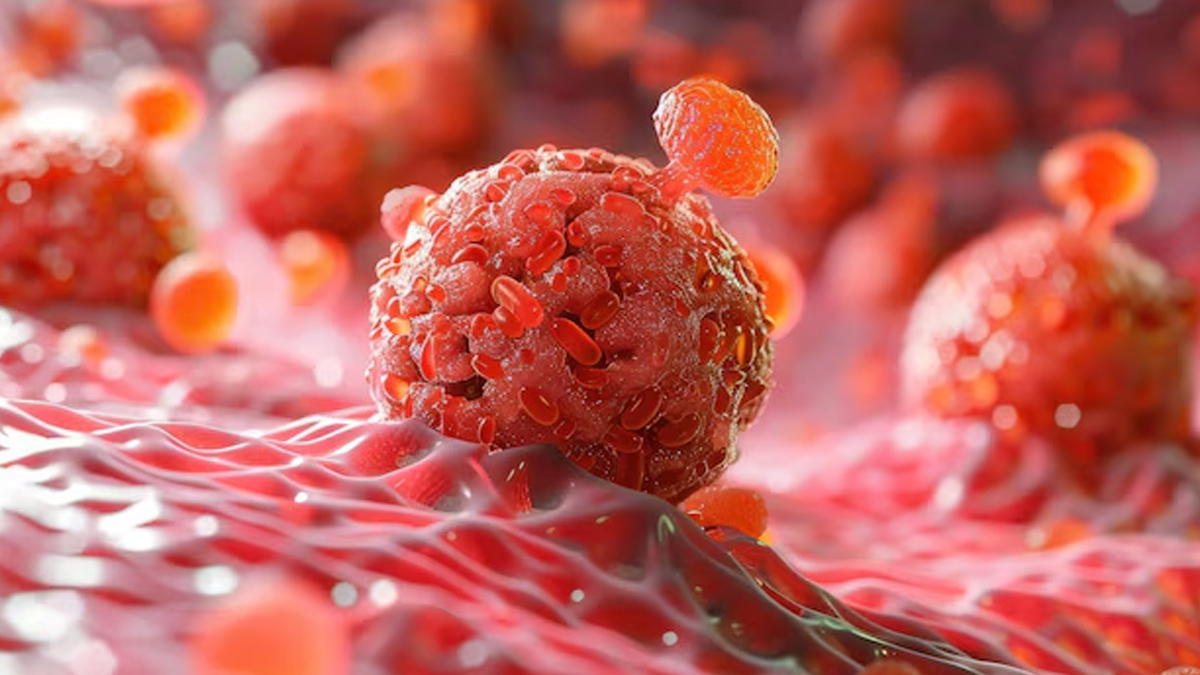
Most people have never heard of Acute Myeloid Leukaemia (AML) until someone they know is diagnosed, and by then, it’s already advanced. That’s the nature of AML, a blood cancer that doesn't wait. It develops when abnormal White Blood Cells (WBCs) rapidly accumulate in the bone marrow, interfering with the production of healthy blood cells. Often masked by symptoms like fatigue, frequent infections, or unexplained bruising, AML tends to get diagnosed late, when it’s already progressed.
Table of Content:-
We spoke to Dr Shilpa Gupta, Consultant Hemato-oncologist, SUNACT Cancer Institute, Mumbai, who explained AML, its origin, symptoms, diagnosis, and treatment.
A Matter of Speed and Severity

What sets AML apart from other forms of blood cancer is the speed at which the disease develops. “The rapid progression of AML occurs in weeks as opposed to more indolent forms, such as Chronic Lymphocytic Leukaemia (CLL), which can take years to show any meaningful change. The disruption of normal blood cell production alongside acute fatigue, infection, and uncontrolled bleeding experienced by someone with AML makes this condition especially dangerous,” explained Dr Gupta.
According to StatPearls, the yearly rate of new cases in both men and women is about 4.3 for every 100,000 people, which amounts to over 20,000 cases annually in the United States.
Where the Cancer Begins
The myeloid lineage gives rise to Red Blood Cells (RBCs), platelets, as well as specific White Blood Cells (WBCs); these are the tissues where AML develops. On the other hand, ALL targets lymphoid cells, while lymphomas usually originate within lymphatic tissue. This difference matters because it determines both clinical presentation and treatment strategy.
Diagnosis and Genetic Complexity
“The distinct subtypes that compose AML each have unique traits; therefore, it would be more accurate to consider AML a group of subtypes. Effective identification of mutations, such as FLT3, NPM1, or IDH1 requires key molecular testing and cytogenetic analysis,” added Dr Gupta. NPM1 mutations occur in about 30% of AML cases and are considered favourable prognostic indicators. However, co-existing mutations, such as FLT3-ITD can worsen outcomes significantly, according to a 2024 study.
These biomarkers may be exploited in the direction of prognosis estimation and personalisation of treatment. Compared with other blood cancers, these complexities may be less significant, and for this reason, more homogeneous treatment modalities may become feasible.
Also Read: Blood Cancer: Here Are Its Different Types That You Should Be Aware Of
A Shifting Treatment Landscape

AML was previously treated primarily with intensive chemotherapy regimens, which are physically and financially exhausting. Low-dose chemotherapy with Venetoclax has had a few positive outcomes for older patients or those who may not tolerate usual protocols," said Dr Gupta. Venetoclax with azacitidine is currently approved in older or frail patients, with a remarkable complete remission rate of ~86%, with some of them getting undetectable residual disease, according to a 2022 study.
Targeted therapies have also helped take AML management to the next level. "Ivosidenib, for example, brings hope to patients with the IDH1 mutation, allowing more targeted treatment. Such newer treatments, though not curative, control the disease and its symptoms, thus providing an improved quality of life, particularly in elderly or frail patients where traditional treatment holds more risk," explained Dr Gupta.
Bottomline
Dr Gupta concluded, “AML remains a challenging disease, however, research and targeted therapy can potentially redefine the outcomes. Knowing its characteristics, which are distinct from other blood cancers, is crucial for identifying it at an early stage and intervening timely.”
If you or someone you love is being diagnosed with blood cancer, it’s crucial to see a haematologist or oncologist. Only a qualified doctor can advise you on the optimal way forward given your unique health situation.
[Disclaimer: This article contains information provided by an expert and is for informational purposes only. Hence, we advise you to consult your professional if you are dealing with any health issue to avoid complications.]
Also watch this video
How we keep this article up to date:
We work with experts and keep a close eye on the latest in health and wellness. Whenever there is a new research or helpful information, we update our articles with accurate and useful advice.
Current Version
